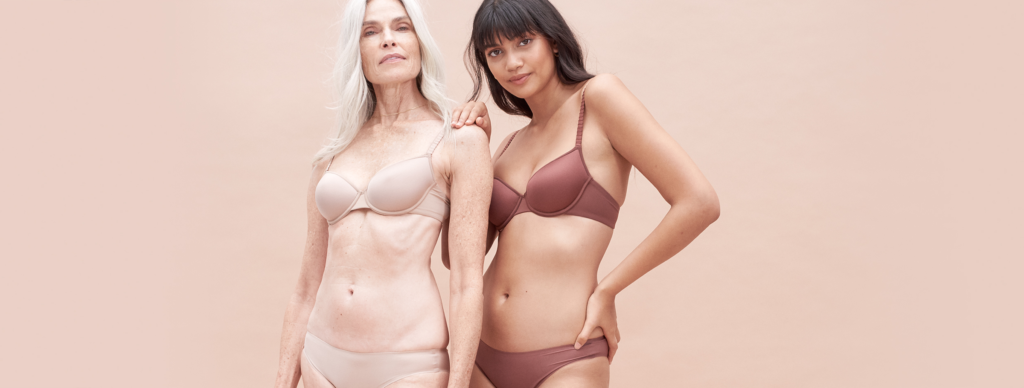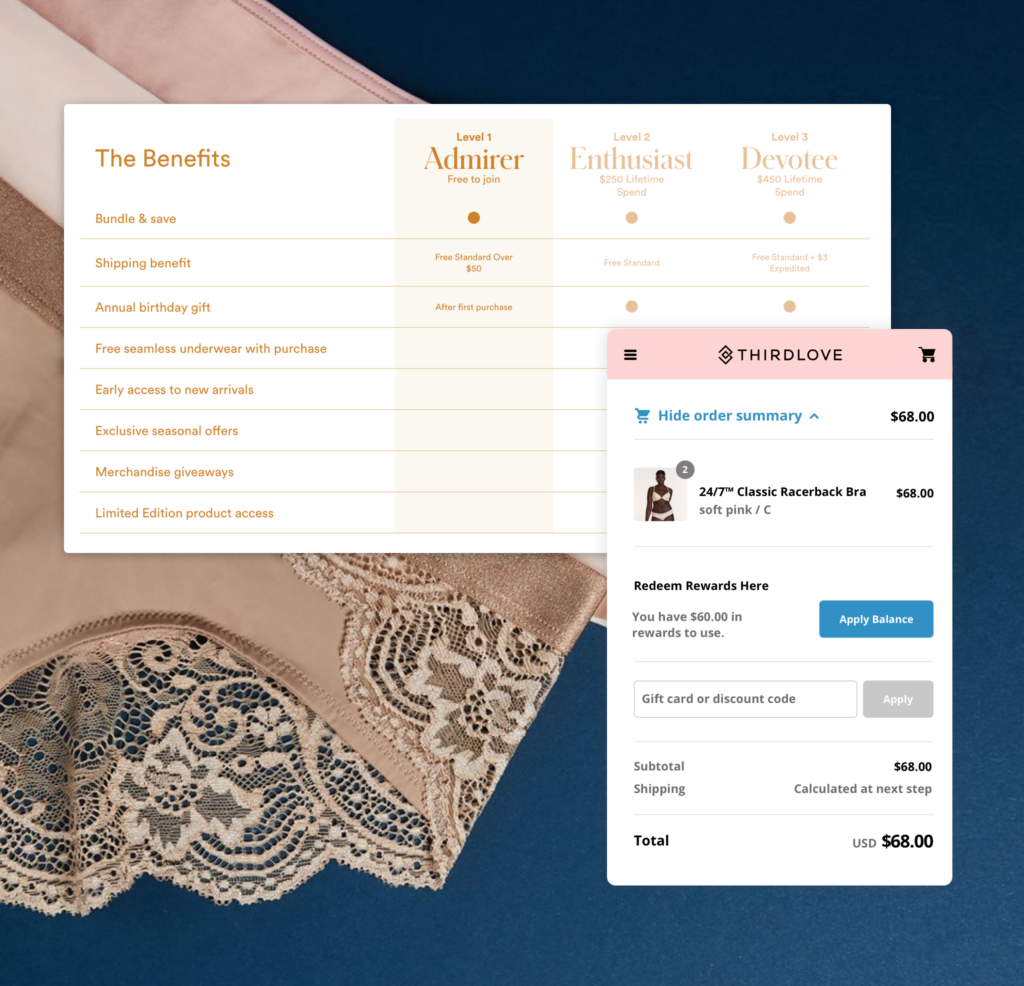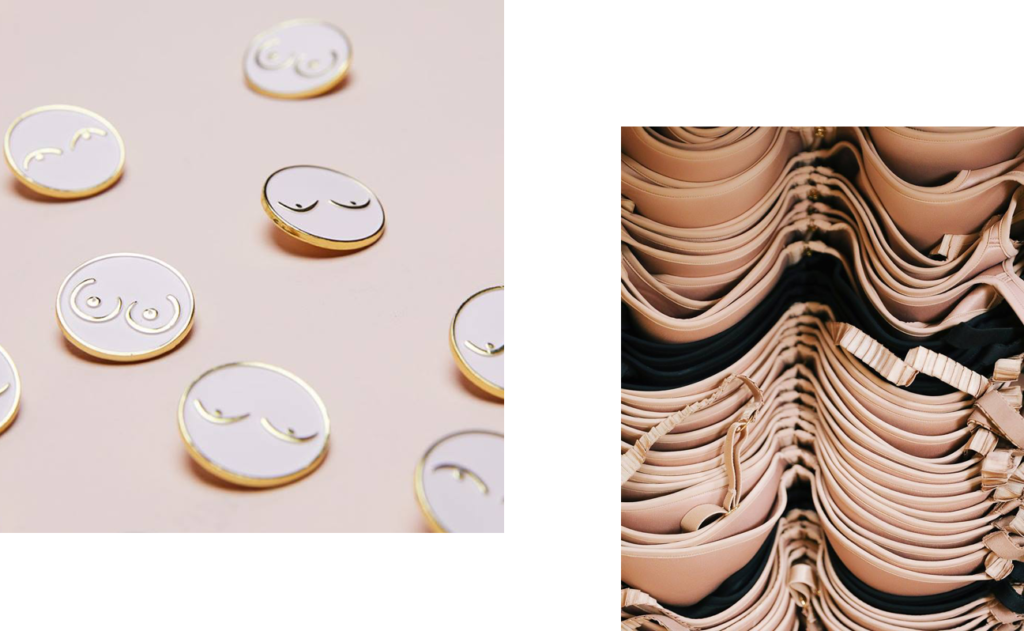Tailoring Your Loyalty Program to Your Brand Community
With rising CAC, a killer loyalty program is table stakes. But not all programs are created equal. In this lesson, learn how to custom-build a loyalty program for your brand and business goals.
 D2C Marketing Course
D2C Marketing Course
With rising CAC, a killer loyalty program is table stakes. But not all programs are created equal. In this lesson, learn how to custom-build a loyalty program for your brand and business goals.
In this lesson, learn how to custom-build a loyalty program for your brand and business goals.
Before launching a loyalty program, you have to do some pre-analytics to understand where your funnel is leaky, generally. It doesn’t need to be the most advanced data science in the world, just some quick progression work to determine some of the factors that are indicative of someone who is likely to be a stickier, better customer (and hopefully, what actions you can drive someone to take). This will help you understand how to design your benefit scheme and triggers — and a loyalty program is nothing without triggers through email, SMS, etc. You’ll get more nuanced as you go and start building individual churn prediction models, but I think you can get to about 70%-80% of the way there just by taking a deep look at a cohortized funnel and seeing what your customers are doing today and what you want them to do tomorrow.
When we launched Hooked, we went with two research mechanisms to lay the foundations for the program. First and foremost, we did a large quantitative survey, where we spoke to our customers who had made one purchase and never returned. We asked about loyalty programs, general brand affinities, and differentiators (i.e., free shipping, access to community) that would make them more inclined to purchase again. It’s not perfect, but it’s good enough to get an initial read, and what came across loud and clear is that people wanted a program where they didn’t have to think, and that would in turn drive stickiness.

As we developed the program, we then had three or four focus groups, showing the experiences end-to-end and just letting people react. It’s funny because for us, a lot of the benefits that are the most impactful are the ones that cost absolutely nothing. Our customers are always most excited for early access to product drops, which is just checking something into the website two days early and sending an email. There’s no substitute for testing and understanding what’s most important to your customers. These pieces of research also helped us better calibrate expected redemption rate and build a stronger budget and business case from the outset.
To structure your program effectively, you need to consider both hard facts like the purchase frequency in your vertical and up-sell/cross-sell behaviors as well as your brand identity and experience. One of the core principles of Hooked is rewarding our customers for sticking with ThirdLove in the long run, just because we’re in a bit of a strange category. You don’t go buy a bra every month. A lot of people will wear their bra for one or two years before they need to make a repeat purchase, and we want to stand behind the quality and durability of the product.
We didn’t want to penalize people who were like, “Okay, let me just stock up in year one and then I don’t really need something in year two.” We wanted to make it about longevity and really play that long game so that the next time she’s in the market for a bra, whenever that may be, she doesn’t even expand the consideration set. She knows she is going back to ThirdLove because she’s going to be treated with the same respect and still have access to her same perks. That’s why we opted for the VIP tier system and building the benefits that way.

Once your customer makes an account and becomes invested as a VIP member, you have the opportunity to disrupt that purchase cycle and introduce some incrementality. The idea is that you gamify within the confines of the consumer expectation, and since your customer is emotionally connected to the program and brand community, she is more likely to be responsive to impulse drivers like targeted item-level offers and limited product access.
In our case, we also chose a tiered system because we knew internally that we did not want to go the points route. We’re a premium brand, and we didn’t want to be a “spend X get Y back” brand. Instead, we wanted to over-deliver on experiences and elevated perks, and to trigger secondary behaviors in that more subtle way.
Originally, when we were naming our program tiers, we considered just going with something generic like bronze, silver, and gold. Ultimately, it was really important to us to find something that was appropriate for our customer and that she could buy into emotionally from the start. You need to involve your creative team and your copywriters so the copy and the naming feel authentic to your voice. The same goes for the creation of a mark and color palette for the asset. Even if you’re just launching, it’s hard to roll back and re-brand, just like it is at the master brand level. In general, I think it’s tricky when you just pick out-of-the-box copy and try to make it work.
We kept playing around and going back and forth, but in the end, we just put it to our customers. We tested to find the copy that made them excited about trying this loyalty program. It became pretty clear that giving them something that allowed them to form a sort of identity worked the best. It’s been interesting to watch it play out now — customers are more and more often referring to themselves as “Admirers” or “Devotees.” They feel like they’re a part of the community.
It’s not about doing some kind of massive market research. I literally just email our customers and ask them to come in or fill out a quick poll. It’s about being scrappy. We started off with top customers, but also built out samples of engaged customers, unengaged customers, and prospects as well.
In addition to branding the structure and messaging of your loyalty program, you need to be deliberate about branding the experiences and perks that you provide for your top customers. Gifts and other surprises should serve the dual purpose of delighting your customers by being fun and relevant as well as building your brand (consider things like shareability on social, brand collaborations, etc.).

One thing we did was give out little breast pins for Valentine’s Day, thanking our customers for being Hooked members. That builds brand affinity, but I think in our category in particular, it also gives them something emblematic that they can wear and show their friends when our product isn’t seen. The benefits are twofold. Every time you show it off, you associate yourself more and more with the brand and introduce new customers to it.
We also do swaps with some of our brand partners, offering gifts with purchase. We did a partnership with a premium candy company where some of our top-tier members had access to a free box of candy right around Valentine’s Day. We try to do something special once a month. It doesn’t have to be this huge, grand cost. Leverage your brand partnerships, and get something valuable to your customers, even if you can’t produce it in-house. Choose a brand that your values align with and with demographics that look and sound pretty similar to who you’re going after, but not a 100% overlap. I think that’s the magic recipe.
Probably the worst thing about retention marketing is that you always have to wait six to 12 months to see if what you did worked. It’s such a long process and there’s always a temptation to try something new, but really you just have to stick to the course without introducing too many variables. Later on, you can evaluate and make bigger changes.
That being said, you can and should make some minor modifications along the way when aspects of your loyalty program don’t have immediate business impact. On the benefit level, you can put different milestones in place to track performance and understand where to tweak and test in the early stages. Pivot a tiny bit, but don’t throw the baby out with the bathwater, so to speak.
Remember that a loyalty program is a living organism. You need to build your program so that it can adapt without disturbing the core of your brand as it develops and grows. If you were to create a new business model or enter a new category, your loyalty program needs to change with you.
“Yotpo is a fundamental part of our recommended tech stack.”
 Laura Doonin, Commercial Director
Laura Doonin, Commercial Director








